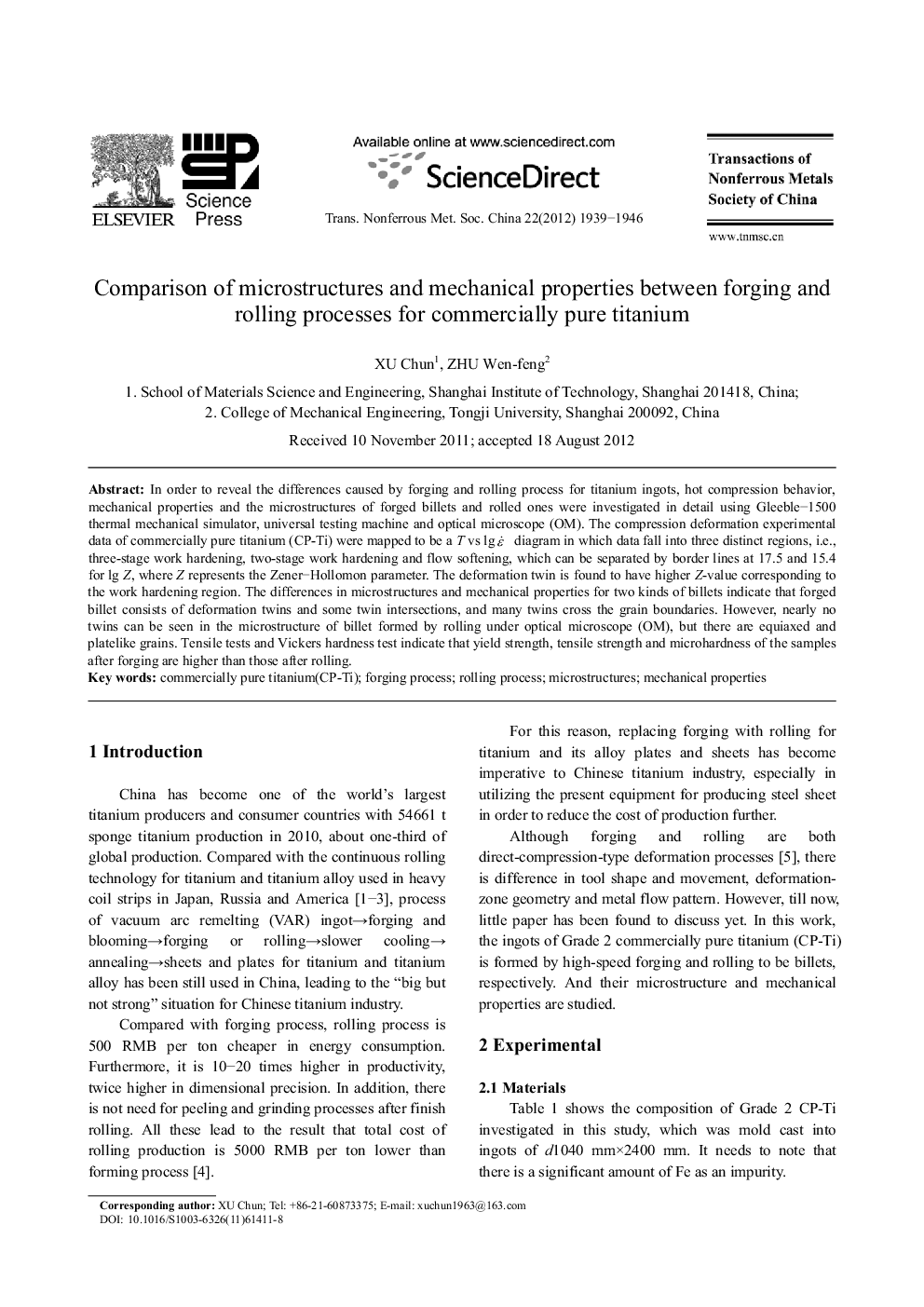| Article ID | Journal | Published Year | Pages | File Type |
|---|---|---|---|---|
| 1637706 | Transactions of Nonferrous Metals Society of China | 2012 | 8 Pages |
Abstract
In order to reveal the differences caused by forging and rolling process for titanium ingots, hot compression behavior, mechanical properties and the microstructures of forged billets and rolled ones were investigated in detail using Gleeble-1500 thermal mechanical simulator, universal testing machine and optical microscope (OM). The compression deformation experimental data of commercially pure titanium (CP-Ti) were mapped to be a T vs lgε diagram in which data fall into three distinct regions, i.e., three-stage work hardening, two-stage work hardening and flow softening, which can be separated by border lines at 17.5 and 15.4 for lg Z, where Z represents the Zener-Hollomon parameter. The deformation twin is found to have higher Z-value corresponding to the work hardening region. The differences in microstructures and mechanical properties for two kinds of billets indicate that forged billet consists of deformation twins and some twin intersections, and many twins cross the grain boundaries. However, nearly no twins can be seen in the microstructure of billet formed by rolling under optical microscope (OM), but there are equiaxed and platelike grains. Tensile tests and Vickers hardness test indicate that yield strength, tensile strength and microhardness of the samples after forging are higher than those after rolling.
Related Topics
Physical Sciences and Engineering
Materials Science
Metals and Alloys
Authors
Chun XU, Wen-feng ZHU,
